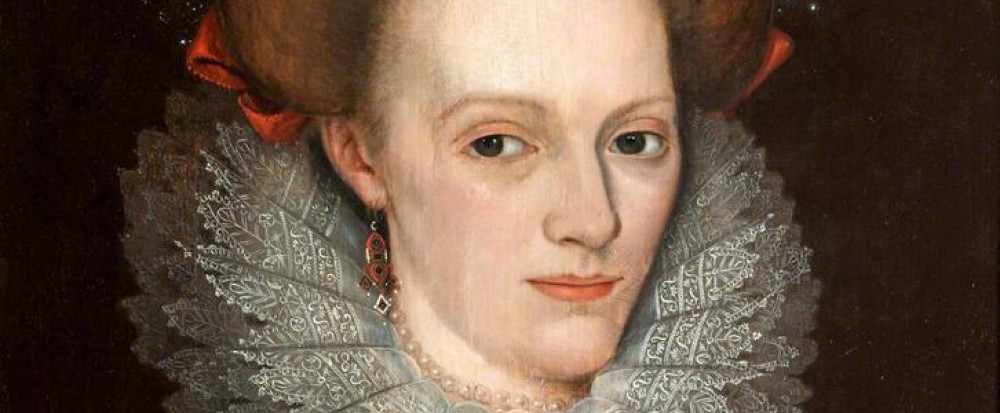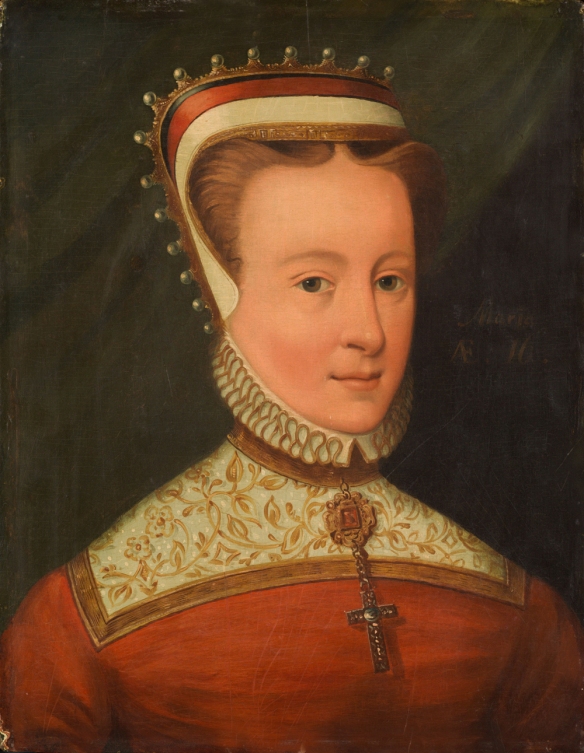Ellen St John visited Lydiard Park for her father’s funeral. Whether this was the one and only time she ever saw her ancestral home remains unknown. In fact most of Ellen’s life is something of a mystery, living as she did on the periphery of St John family life.

Ellen’s life was shrouded in secrecy and even she once commented that she never knew her exact birth date. Difficult to locate on the Victorian census returns, Ellen could have become a mere footnote in the St John family history if it were not for a handful of letters that escaped the monumental clear out conducted by her half brother Vernon 6th Lord Bolingbroke, who donated 2½ tons of paper to the wartime salvage effort.
Ellen Rose was the only surviving child born to Ellen Medex and Henry Mildmay St John, 5th Viscount Bolingbroke, during a clandestine relationship which lasted over 30 years.

Despite Henry’s later protestations, it appears unlikely that he ever married Ellen Medex. However, following her death in 1885 she was buried in Highgate Cemetery where Henry declared her to be ‘Ellen, Viscountess Bolingbroke.’

Ellen Rose was born in 1863. Her parent’s nomadic lifestyle under various pseudonyms makes it difficult to locate the family on the 1871 and 1881 census records.
However, the 1891 census returns reveal that Ellen Rosie St John aged 29, occupied four rooms at 39 Cornwall Road close to Paddington Station, where she lived with her companion Minnie Breton on an income of private means, most probably money left to her by her mother.
At the time of the 1911 census Ellen had moved to the suburbs, a six roomed flat at 11 Babington Road, Streatham where she lived with her maid, Minnie Leonard.
By the 1930s Ellen, then in her late sixties, lived in a rented house at 13 Malvern Road, Thornton Heath, Surrey.
She appears to have owned another property that she rented out, meanwhile living in rented accommodation where she also let out several rooms.
Acting on behalf of the widowed Lady Bolingbroke, Harold Dale at H. Bevir & Son, long term solicitors to the St. John family, was the unfortunate recipient of Ellen’s letters, nine of which are held at the Wiltshire & Swindon History Centre in Chippenham.

“I am writing this to ask you if Lady Bolingbroke is still at Lydiard as I have written to her & as she has not answered my letters I am wondering if she received them,” Ellen wrote to Harold Dale, at his Wootton Bassett office.
“She always sent me my rent etc through Mr Goodwyn & I have not had any cheque this month (due 11th). I don’t think he can realize what that means to me. I have not anything of my own & my mother’s money – which was not much was spent was little as everything was so expensive.”
While Mary, Lady Bolingbroke continued to battle the financial consequences of the extravagances of previous generations of St. Johns, her stepdaughter similarly suffered from the excesses of her ancestors’ lifestyles.
In 1922 Vernon Henry St. John, Ellen’s half brother, petitioned the government that he should be summoned to Parliament by the name and style of Viscount Bolingbroke, Viscount Saint John, Baron Saint John of Lydiard Tregoze, and Baron Saint John of Battersea.

The subsequent hearing received extensive press coverage and exposed the details of his father’s, Henry Mildmay, love affairs and subterfuge.
The successful petition enabled Vernon to take his seat in the House of Lords but for Ellen the outcome was less satisfactory.
Tainted by her father’s conduct and with her own illegitimate birth revealed, Ellen wrote to Harold Dale that “I have been here 30 years & the case in the House of Lords simply ruined me here as people have never been the same to me.”

In a letter dated July 3, 1930 Harold Dale outlines the full extent of the financial situation at Lydiard in an attempt to offer Ellen an explanation why he is unable to pay her an allowance. “I am really awfully sorry for you, and do appreciate the position you are in – but Lady Bolingbroke is in exactly the same position, and has no income whatever.
“She also does not know what to do, and she has such heavy expenses in connection with the house and there is nothing to meet them with.
“The position with regard to the future is still in the balance and a great deal depends upon whether any further sales of land take place.
“At the moment the mortgagees will require the whole income and Lady Bolingbroke is powerless in the matter.
“It is a most terrible situation for you.”
Perhaps still unappreciative of the real situation and revealing a little of her father’s autocratic attitude, Ellen replied:
“I cannot understand how it is that Lydiard has got into that terrible state. Lady Bolingbroke could let part of the house & people bring their own servants. That, would bring her a little.”
With the help of Harold Dale, Ellen applied for financial assistance from a variety of philanthropic societies, including the Guild of Aid for Gentlepeople.
“The Society you were kind enough to write to thought the case was not a suitable one so I managed to get a little from another society not permanent unfortunately,” Ellen informed him.
Following the unsuccessful application to the Guild of Aid for Gentlepeople, Ellen again appealed to the beleaguered Harold Dale.

“I hope you will not think me a terrible nuisance – I really don’t know how to go on & I do really dread the winter under these conditions.
“If you could manage to get ever so little a month it would be such a help to keep me going.” Wracked with worry an exasperated Ellen wrote again: “What do you think I can exist upon? The Vicar & Dr. think it a most cruel and dreadful thing not to send me anything.”
Ellen possibly had some contact with the extended St John family, or perhaps she refers to her Medex relatives when she writes – “the family cannot believe such a thing. Father not being on friendly terms with them, had made it bad for me.”
On December 23, 1931 Mary, Lady Bolingbroke wrote to Harold Dale, “ I am enclosing a cheque for five pounds made out to you as I think it advisable it should be sent to her [Ellen] from you.”
Sadly, Ellen’s eventual rescue came at the expense of Mary’s death in 1940. In her will dated 1902 Mary’s first bequest was an annuity of £100 per annum to Ellen St John. In 1940 Ellen was herself 77 years old and in failing health. Her last address in 1942 was 58 Derby Road, Croydon where she rented two rooms. She died at the Mayday Hospital, Croydon in March of that year.
Ellen’s rooms contained very little furniture and were left in a terrible state according to her landlady where “mice jump out of the drawers.” Among her effects were several silver plated items and a model of a Chinese Junk in a glass case, which was described as being ‘very pretty.’

Ellen died owing £14 14s rent. Anxious to locate anything of value, Vernon was informed that the silver plated items were in the possession of the Local Authorities and would be sold to go towards the rent arrears.
Unlike Lady Bolingbroke whose funeral two years previously was attended by family, friends, tenants and estate workers at the parish church in Lydiard Park, Ellen was laid to rest, not in the St. John family vault, but in grave number 20642 plot F.5 in Croydon Cemetery, Mitcham Road.

It seems unlikely anyone other than the funeral director attended Ellen’s burial.
Photographs from top: Ellen St John; her mother Ellen Medex; her father Henry 5th Viscount Bolingbroke; her half brother Vernon 6th Viscount Bolingbroke and interior views of Lydiard House in the 1940s are courtesy of Lydiard Park. The enclosed St John family vault in the churchyard at St Mary’s Church, Lydiard Tregoze.
























